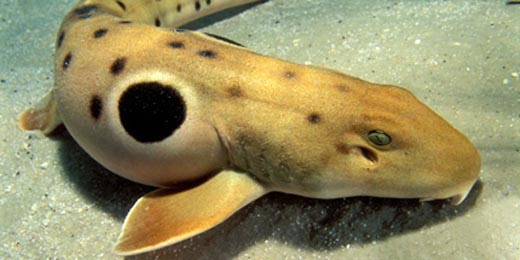 Since so much of life on Earth emerged and diversified in the ocean, walking around the Aquarium can be a bit like walking back through time. This is especially true in the Ancient Fishes exhibit in the Aquarium’s Thinking Gallery.
Since so much of life on Earth emerged and diversified in the ocean, walking around the Aquarium can be a bit like walking back through time. This is especially true in the Ancient Fishes exhibit in the Aquarium’s Thinking Gallery.Many of the ancestral forms of these fishes first appeared hundreds of millions of years ago. That makes these fish older than the oldest dinosaurs! At that time, much of North America was a large equatorial swamp. As the water temperatures rose, oxygen levels dropped. As a result, some of these fish developed new ways of getting essential oxygen from the air.
Let’s take a closer look at one of our ancient fishes:

(Australian lungfish photo by Tannin)
Is that a giant salamander? Actually it’s a Australian lungfish. Though this Australian lungfish has a single lung, it mostly uses its gills to breathe.
The African lungfish, however, has two lungs and can actually drown if held underwater. During the dry season, this species can burrow into mud and spend several years in a dormant state called estivation. [Note: In 2009, Aquarium trainers worked on training an African lungfish to swim through a tube to get food. Photos and video from those efforts are in this post, scroll down.]
Looking at these animals, with their air-breathing habits and paired limbs, it isn’t too hard to imagine that amphibians like this axolotl below evolved from fishes such as these.
In fact, all vertebrates—including reptiles, birds and mammals—evolved from ancestral, air-breathing fishes.
And just to set the record straight, just because a fish species is considered "ancient" does not mean that it is primitive. So-called "ancient" fishes are themselves the result of hundreds of millions of years of evolution, and are very well-adapted to the habitats in which they live.
-Dave


























